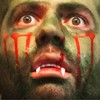
ΔΙΑΦΗΜΙΣΗ
Here's a Sanmao movie from 1949.You can find out more about Sanmao at Asia Obscura. What's amazing about Sanmao is that not only does it popularize a hellish life, but the kid's image is reproduced around China like he's Tintin. It's like if Anne Frank served the role in our culture that Mickey Mouse does.Here's a Sanmao comic in which Sanmao tries to offer himself up for sale. Ha ha ha!These are the complete strips by the way. There's no other punchline or moral to this. Sanmao is begging on the corner, he's hit in the head with a bottle, and then he's on the ground bleeding and crying as a drunk, white(?) sailor looks on. I guess if you see enough misery you don't look for punchlines and stop believing that there is a meaning to suffering.
ΔΙΑΦΗΜΙΣΗ
ΔΙΑΦΗΜΙΣΗ
ΔΙΑΦΗΜΙΣΗ
In 1972-4, when I started mashing Texas and Japanese culture together as a premise for my comic drawing, Dal Tokyo was what I called the fantasy land I was inventing without thinking about it a lot as an effective title. I don't think it is a great name but it kinda gets the idea across without beating you with it.Once I dreamed Captain Beefheart said to me "How is your old Dal Toe?" I tried variations—DalTok Dalto etc. and did lots of variations in the run of the strip.I notice that the comics start out looking a little like your early Jimbo stuff and then after a while they get blacker and blacker and less "fun" until the comic ended in '86. Then it reappears in the mid 90s. Did the comic get visually bleaker as your second marriage was ending? Can you tell me about what was happening in your life?
I am not interested in discussing failed marriages, but no—I was having fun in LA. I had thought about the strip for a few years and drawn it in all kinds of approaches before I started drawing it in a formalized way rather than notes and prototypes. And so I was trying to get all my ideas about the place onto the printed paper. Then I decided that it could be a branching sci-fi strip forever or it could be something weirder. There is a dark section when my close friend and painting teacher, Bruce Tibbetts, was dying a hard death. So that is something you can see in the drawing for a while. I wanted it to go beyond a space opera to something more like painting experiments, so I kept blowing it up. In the first years I was drawing it with a rapidograph and I switched to a Kohinoor art pen, which went out of production. A lot of the style change, past a point, was caused by the tools I was using to make it.
ΔΙΑΦΗΜΙΣΗ
I started using the Japanese comic dip nibs. The G series. They are pointy and have good metal and want to make certain kinds of lines. They make more of an 18th century line, so that made the strip look more old timey. Plus, I always loved John Tenniel, Durer and Nast, and have moved into studying Gillray, Cruikshank, Grandville etc. Crosshatchers. In my early 20s I was looking at Cal Schenkel, Bob Zoell, the Hairy Who, Jack Kirby, Peter Saul, HC Westermann. Crazy fine artists.
ΔΙΑΦΗΜΙΣΗ


ΔΙΑΦΗΜΙΣΗ
ΔΙΑΦΗΜΙΣΗ
ΔΙΑΦΗΜΙΣΗ
ΔΙΑΦΗΜΙΣΗ
ΔΙΑΦΗΜΙΣΗ
